Development of PD catch monitor for substation maintenance
- Michika Miyazaki
- Moriya Fujino
- Hideaki Komiya
- Hiroki Takano
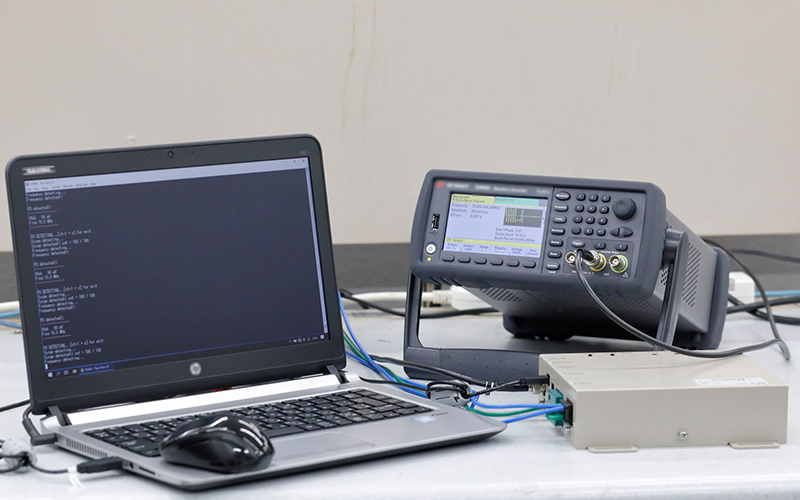
Japan is a country with very few power outages compared to a variety of countries around the world. From around 1985, the number of power outages per household per year fell below one, and in 2014, it was recorded as low as 0.16 times per year. Compared with other countries in the same period, the number was 0.5 times/year in Germany, 0.9 times/year in France, and 0.61 times/year in the United Kingdom*. There are differences in conditions between countries, such as weather conditions and the occurrence of disasters, but you can see that it is still quite small.
*Survey by the Federation of Electric Power Companies of Japan in FY2014
Japan can be said to be superior not only in terms of minimal power outages, but also in terms of low fluctuations in frequency and voltage and stable power supply. Stability is extremely important in supporting industries in the machinery and electronics industries, and it is also useful in maximizing the accuracy and performance of the devices used.
Such a stable electric power infrastructure in Japan is supported by a wide variety of transmission line routes, high-performance power devices, and technology that prevents accidents from occurring. Among them, we will introduce the technology development to prevent the occurrence of accidents this time.
Technology
As substation equipment ages, the risk of failure increases. If left unattended, it may lead to a serious accident. If power transmission is interrupted due to an accident at a substation, it will have a great impact on the local community.
For example, traffic lights will stop, causing accidents and congestion, and it will develop into serious problems such as plant production stoppages and power outages at ordinary homes. For this reason, substation equipment has been inspected by professional engineers.
However, there is a limit to the number of inspections that can be carried out by personnel at the substation, and it can be assumed that there was no problem in the previous inspection, but the next inspection was just before a serious problem occurred.
Among these problems, the Partial Discharge Diagnostic Device (PD Catch Monitor) was developed to solve problems such as limited number of inspections and human cost. It is a compact device measuring 18 x 18 cm in size and weighing 1.2 kg. The sensor is attached to the object to be measured, such as a transformer, with a magnet, and the main body is installed inside the panel.
This device enables continuous monitoring 24 hours a day, 365 days a year, without rest. Personnel costs are also reduced, as professional engineers do not have to go to the site for periodic inspections.

Profile
-
 Michika MiyazakiTechnology Development Division
Michika MiyazakiTechnology Development Division
Research & Development Center
ICT Technology Group -
 Moriya FujinoTechnology Development Division
Moriya FujinoTechnology Development Division
Research & Development Center
ICT Technology Group
Chief -
 Hideaki KomiyaTechnology Development Division
Hideaki KomiyaTechnology Development Division
Research & Development Center
ICT Technology Group
Chief -
 Hiroki TakanoTechnology Development Division
Hiroki TakanoTechnology Development Division
Research & Development Center
ICT Technology Group
Partial discharge diagnostic device that can be remotely monitored 24 hours a day, 365 days a year
Komiya:If the insulation inside a transformer, which is one of the pieces of equipment in a substation, deteriorates, a ground fault occurs in which current flows to the ground, causing power outages, fires, and electric shocks. Therefore regular inspection is necessary. In the past, this insulator deterioration diagnosis was performed by a professional engineer who brought a measuring instrument to the site and performed an inspection about once every six months. At this time, a device called an "AE sensor" that captures and diagnoses ultrasonic waves is used for inspection. However, this device is expensive and requires an amplifier to amplify the ultrasonic waves, adding more cost. Therefore, a sensor called a "surface current sensor" was adopted for this inspection device.
Miyazaki:Problems with the insulator of transformers cause localized discharges called partial discharges. When a discharge occurs, an electromagnetic wave is generated on the surface of the transformer. A surface current sensor has a function to convert this magnetic wave into an electrical signal. Surface current sensors are cheaper than AE sensors because they have a simpler structure. In addition, since they do not require an amplifier, the cost of the device itself is significantly lower. We have experimented many times. The detectivity is good, and the result is equivalent to or better than that with an AE sensor used.
Fujino:The PD Catch Monitor constantly monitors the electric signal obtained from the surface current sensor. The waveform of this electrical signal can be analyzed to issue an alarm when partial discharge is detected. Alarms can be issued even when the sensor is disconnected, the power supply is disconnected, or the device itself is in an error. Therefore, it is possible to respond quickly to these errors.
Takano:Since the device has a USB port, it is possible to acquire logs before and after the occurrence of an abnormality on site, analyze the abnormality in detail, and change various setting values. In addition, since the device's LED lamps can also indicate abnormalities, the specialized skills previously required for inspections are no longer required, leading to labor savings.

Groping development
Steady progress was made step by step.
Tell us about the division of roles.
Takano:I was in charge of designing the software for operating devices and processing information.
Fujino・Miyazaki:We designed hardware such as circuits and housings for devices.
Komiya:While designing the hardware, I managed the team as a leader.
Komiya:Our company did not have a product using a surface current sensor, so the development started from a state of lack of knowledge. Using an actual surface current sensor, we conducted a test called an electric charging test in which partial discharge is generated by applying a voltage to a simulated tank filled with insulating oil, and collected data at substations that are actually in operation to investigate what type of waveform can be obtained when partial discharge occurs. These investigations were difficult because working with my hand at the site was indispensable in the investigations, but the data obtained here became a big foothold for development.
Fujino:Even in designing hardware, we also had to understand the electrical-specifications, such as the frequency-characteristics and sensor-sensitivity of the surface current sensor. Since it was the first time to develop the system, many of the operating principles are unclear, so when testing to understand the characteristics, we designed and manufactured special jigs by ourselves, referring to papers and other materials. With the cooperation of universities involved in the development of surface current sensors, we were able to determine the configuration of the design.
Miyazaki:When the team was formed and development started, I was in my second year at the company. The design of the analog circuit I was in charge of was different from the field I have learned so far, and I was also worried at first because there was little contact with the team members. I had never read analog circuits before, so I had a lot of difficulty in understanding the flow of signal processing and the waveform. In the field survey using the surface current sensor, I was in charge of confirming the acquired waveform data with the oscilloscope. However, I felt the difficulty of development due to some failures, e.g., the appropriate sampling rate and input voltage range were not known in advance, and data was not obtained successfully after analysis.
Fujino:I often saw how you understood the customer's needs while communicating with other departments, and you were proactively working to incorporate those needs into the product.
Miyazaki:The team was actively communicating, and there were many occasions for discussions and information-sharing outside the regular meetings.. At first, I participated in the meeting without knowing anything, but I was able to learn a lot while actually working with my hand in an environment where I can freely ask questions and propose ideas, and I was able to work on development.

Development continues for a safe and secure future
Miyazaki:Currently, the number of EV (Electric Vehicle) is increasing and the use of ICT infrastructures is becoming more active, and demand for electric power is expected to increase more and more. On the other hand, we believe that there is a shortage of personnel to manage it, so it is necessary to save labor in the monitoring of equipment as much as possible. Under these circumstances, the number of digital substations that can save labor in operation is increasing, and we would like to develop inspection and diagnostic systems that respond to such a new age environment and support safety and security.
Fujino:PD Catch Monitor is being installed at substations and will be put into trial operation in stages, but the development is not yet complete. We believe that the data obtained during the trial operation will contribute to future improvements. It is considered to be important to reflect the data obtained here in the design.
Komiya:This product is specialized for oil-insulated substation equipment, but we would like to support other insulation methods in the future. We also plan to focus on the development of new products for digital substations that are capable of more detailed remote monitoring.

Conclusion - Sincere Efforts to Support Important Social Infrastructure-
Demand for electrical energy is increasing as environmental problems become more serious and a transition to a carbon-neutral era is required. Even today, the four engineers of TAKAOKA TOKO are making sincere efforts to support the stable supply of electricity, an important social infrastructure, so that our daily lives will not change
Latest articles
-
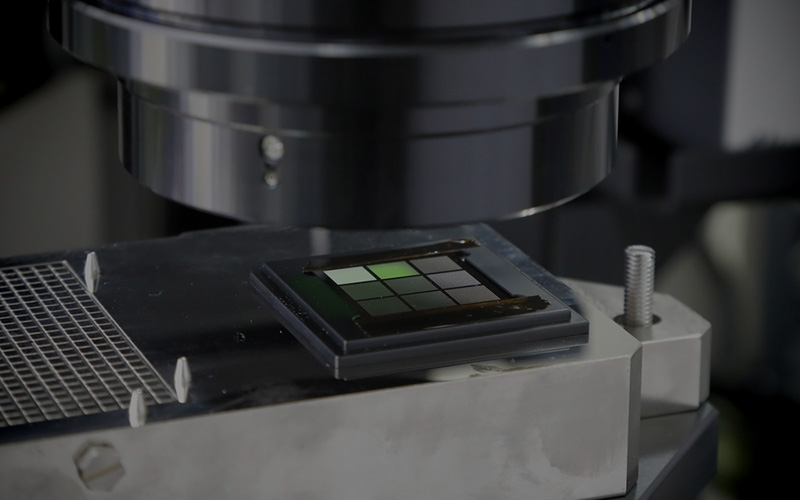 interviewThe confocal surface shape measurement system for semiconductor reliabilityIt is no exaggeration to say that semiconductors are used in everything supporting our lives and industry in modern society. Examples include smartphones, home appliances, and industrial products in various fields.
interviewThe confocal surface shape measurement system for semiconductor reliabilityIt is no exaggeration to say that semiconductors are used in everything supporting our lives and industry in modern society. Examples include smartphones, home appliances, and industrial products in various fields. -
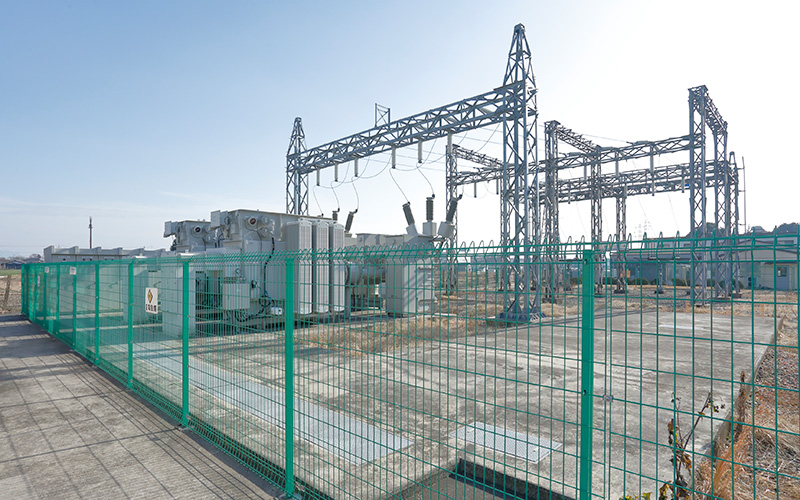 interviewImplementation of a Sensor Solution for Substation DigitalizationGlobal energy prices remain at high levels. The presumed cause is the imbalance between energy supply and demand due to recovery in economic activity from the spread of COVID-19, unseasonable weather, disasters, Russia's invasion of Ukraine, and other factors. The soaring energy prices naturally have an impact on the electricity sector, putting not only ordinary households but also electricity suppliers, or electric power companies, in a difficult situation. Power companies are being forced to cut costs to keep power prices down.
interviewImplementation of a Sensor Solution for Substation DigitalizationGlobal energy prices remain at high levels. The presumed cause is the imbalance between energy supply and demand due to recovery in economic activity from the spread of COVID-19, unseasonable weather, disasters, Russia's invasion of Ukraine, and other factors. The soaring energy prices naturally have an impact on the electricity sector, putting not only ordinary households but also electricity suppliers, or electric power companies, in a difficult situation. Power companies are being forced to cut costs to keep power prices down. -
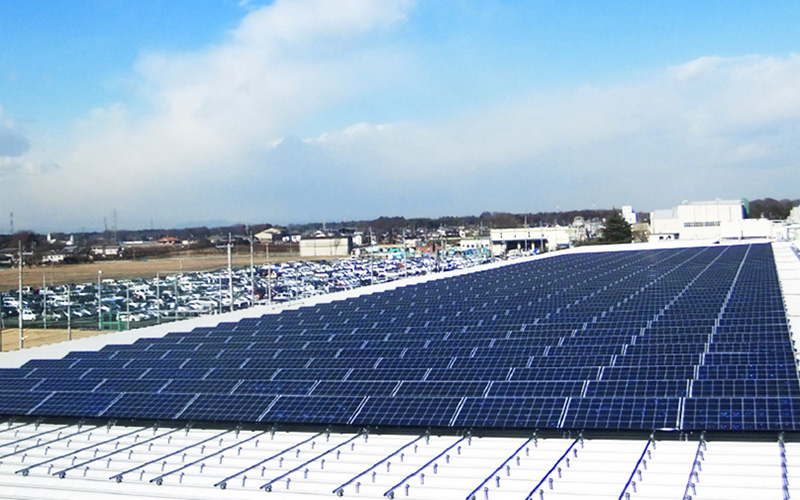 interviewDevelopment of Techniques for Solar Power Generation Prediction Using AIIn order to promote carbon neutrality, the use of renewable energy that doesn't emit CO2 is expanding.Among renewable energy resources, solar power generation is an important one which will continue to grow in popularity.
interviewDevelopment of Techniques for Solar Power Generation Prediction Using AIIn order to promote carbon neutrality, the use of renewable energy that doesn't emit CO2 is expanding.Among renewable energy resources, solar power generation is an important one which will continue to grow in popularity. -
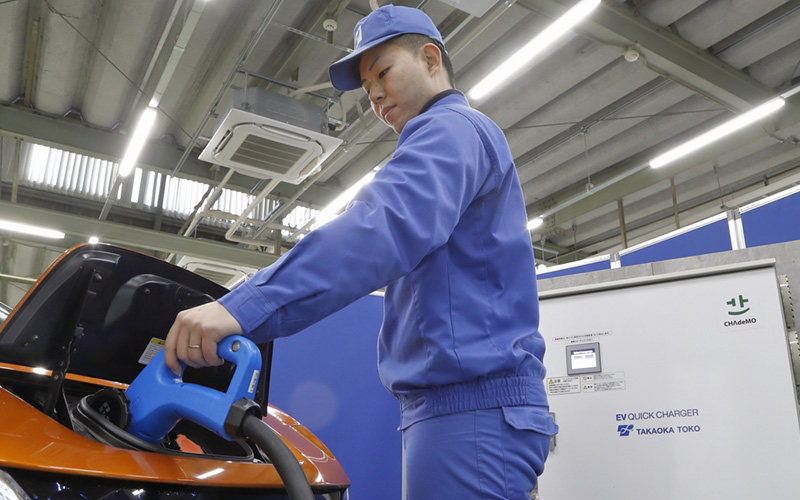 interviewDevelopment of Medium-Capacity Quick Charger for Electric VehiclesIn anticipation of expansion of EV charging infrastructure in Japan, where the EV shift is accelerating, we worked on the development of the “medium-capacity quick charger (B11)” as a charger that meets the needs for intermediate chargers between normal chargers and quick chargers. This article introduces the features of the product, ingenuity in the development process, and our future vision.
interviewDevelopment of Medium-Capacity Quick Charger for Electric VehiclesIn anticipation of expansion of EV charging infrastructure in Japan, where the EV shift is accelerating, we worked on the development of the “medium-capacity quick charger (B11)” as a charger that meets the needs for intermediate chargers between normal chargers and quick chargers. This article introduces the features of the product, ingenuity in the development process, and our future vision.
